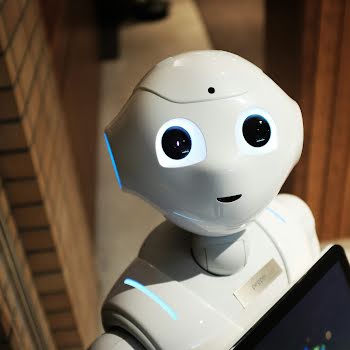
By Amanda Cassidy
09th Nov 2019
09th Nov 2019
Are you ready to be influenced by our pixelated peers?
Meet Miquela. She’s a musician and a self-confessed ‘change-seeker’, she likes hanging out with friends on the beach and eating pasta. She has 1.7 million followers on Instagram.

She’s also not real.
She is one of a number of CGI influencers created by a company called Brud. And she’s been accused of manipulating children and teens for commercial gain.
The fear is that companies and brands could easily exploit the relationship the avatar fosters with followers, selling them merchandise, advertising brands or even political manipulation. Some of Brud’s creations have already promoted big brands like Starbucks and Spotify.

And it is quite frightening how life-like CGI characters like Miquela really are. It is easy to see how quickly the lines could blur between fact and fiction especially for children. Some are even pictured hanging out with real life celebrities, superimposed to make it look like they are all pals.
In other words, it doesn’t seem to matter what she is, because she is influencing.
The interaction with the characters, who followers are aware that they are not real, is exactly the same as with those who are real.

Manipulation
“I love you, Miq” writes one fan. Another comment under a picture of the CGI character posing in underwear for cancer charity says “I wish I had a body like this’. A fan writes; “This might sound weird, but your body looks so soft.”
There are plenty of comments about how surprised fans are to find her so engaging. “Man, I know you are a bot but you are so amazing” and “I’m serious, I want to marry you”.
People are even asking where Miquela gets a certain bag or jumper, even though they understand that the character is simply a software creation. In other words, it doesn’t seem to matter what she is, because she is influencing.
But human influencers have guilt, conscience, shame, pride and (sometimes) integrity. The draw of the sinister surrounds these types of artificial bots because in the wrong hands, they can be so easily manipulated to spout whatever the puppeteer or in this case, the developer, wants.
And while there is an air of novelty around this for now, in the coming years the level of sophistication will mean none of us know if a character like this is real or not.
Speaking to Insider, Marie Mostad, digital expert explains the dangers “Children are struggling to separate fact from fiction in an increasingly digital world. Young children tend to be far less skeptical than adults making them more susceptible to these dangers,” she said. “As such, within school and at home, we should begin educating children on how to spot bots, explaining how they are made and removing some of the ‘magic and mystery’ that surrounds them.”
Future
But perhaps we are underestimating the children of the digital era.
Recently the Middle East’s digital influencers Laila Blue was ridiculed for posting pictures sitting down to a meal with some commenting how ridiculous it was to be trying to “sell” something she could never experience or understand.
“Guys, what on earth…” one fan wrote. Another, Zoe Bowker asked “not sure how CGI can taste something let alone give a recommendation”

Just a phase?
And while there might be a gap in the role of what CGI influencers actually do in terms of marketing, it might be a short-term gimmick anyway.
As much as we emphasis aspirations for the flawless, when it comes to these characters, their downfall might be that they are simply too perfect for our very imperfect world.
Image via Instagram
Read more: Instagram bans filters with “plastic surgery” looks
Read more: The rise of the baby influencers
Read more:The future of work: Embrace the robots























